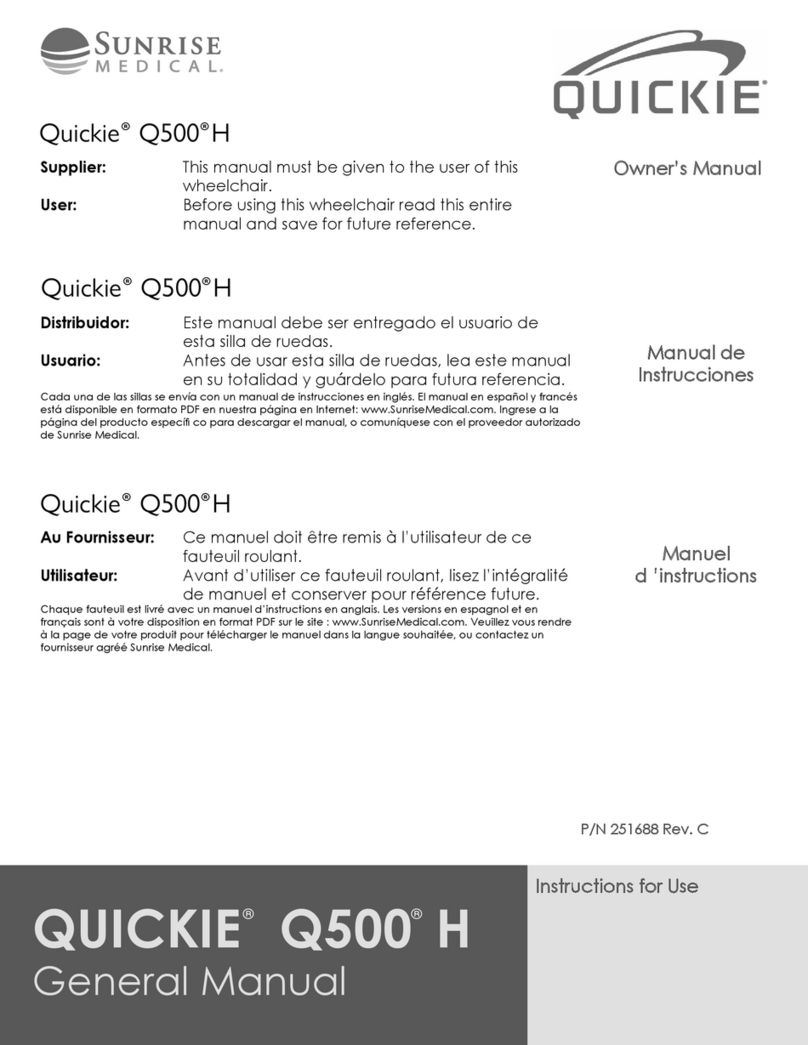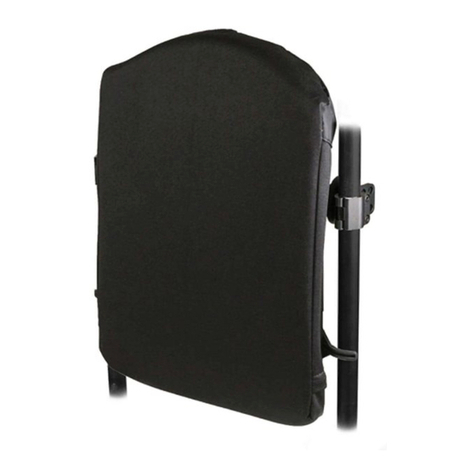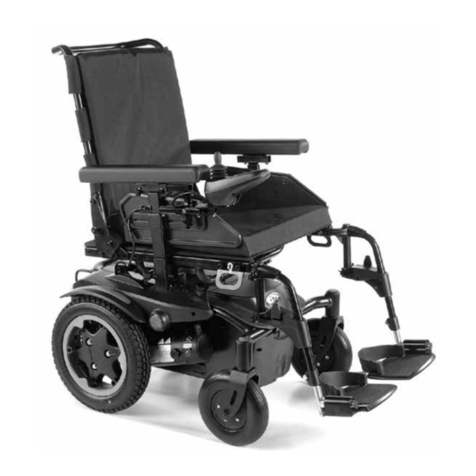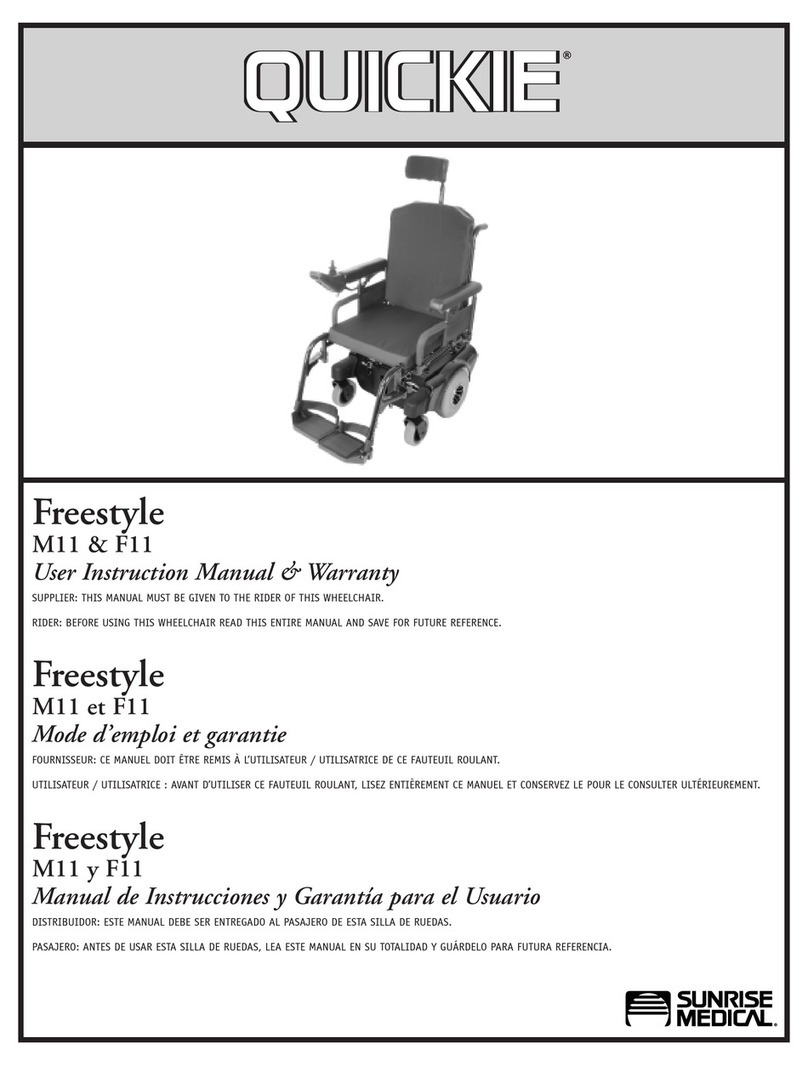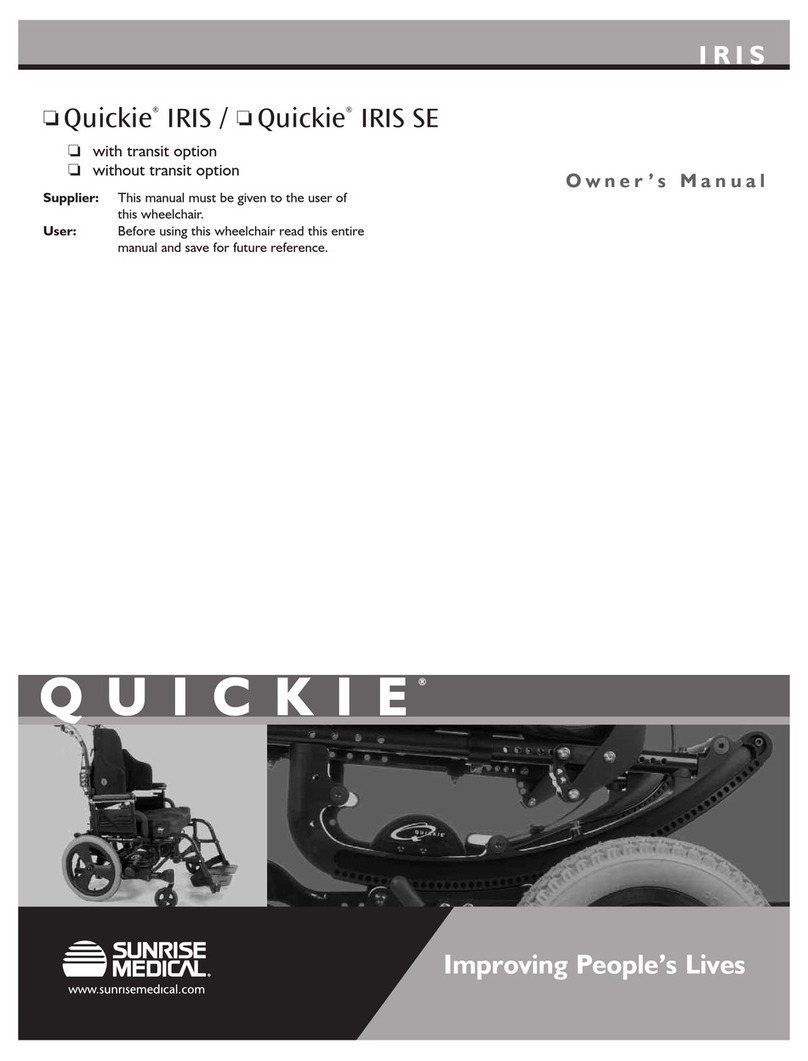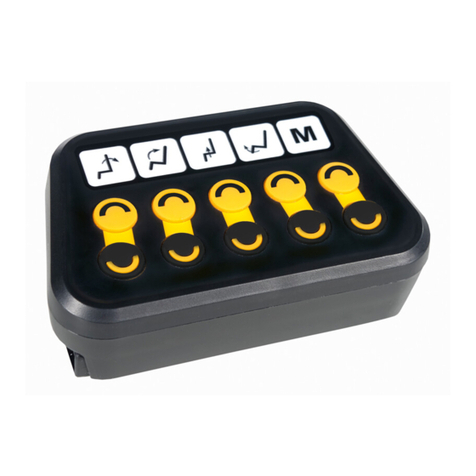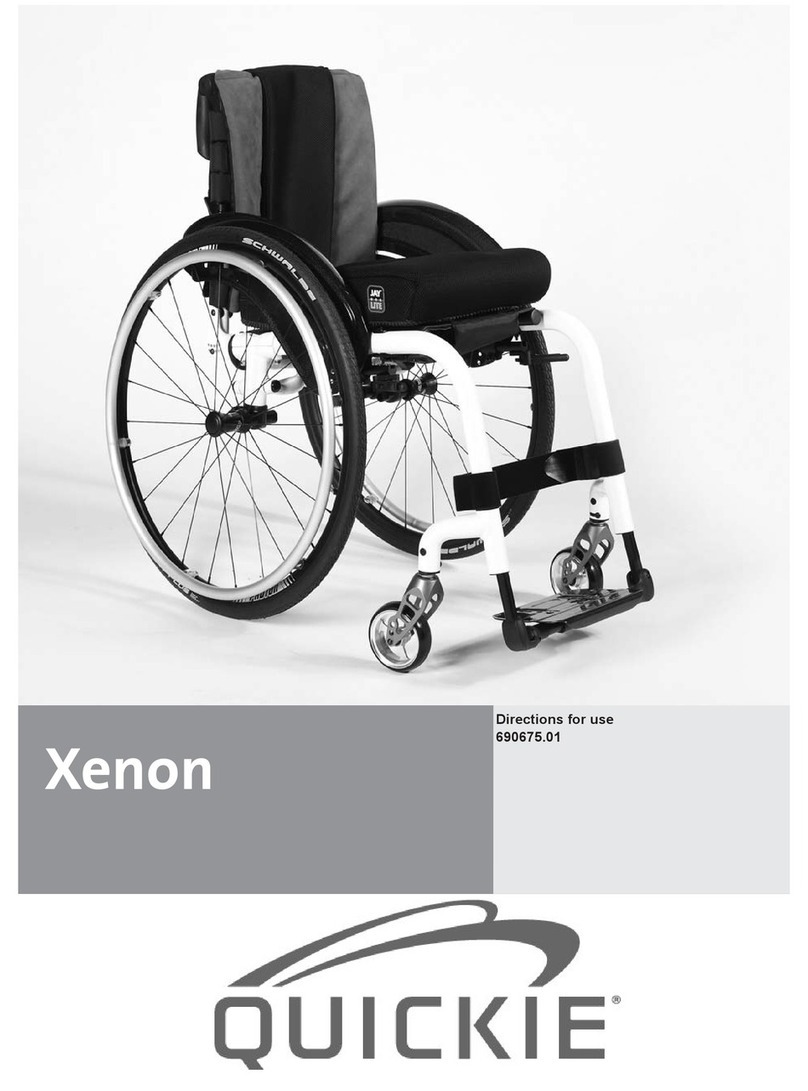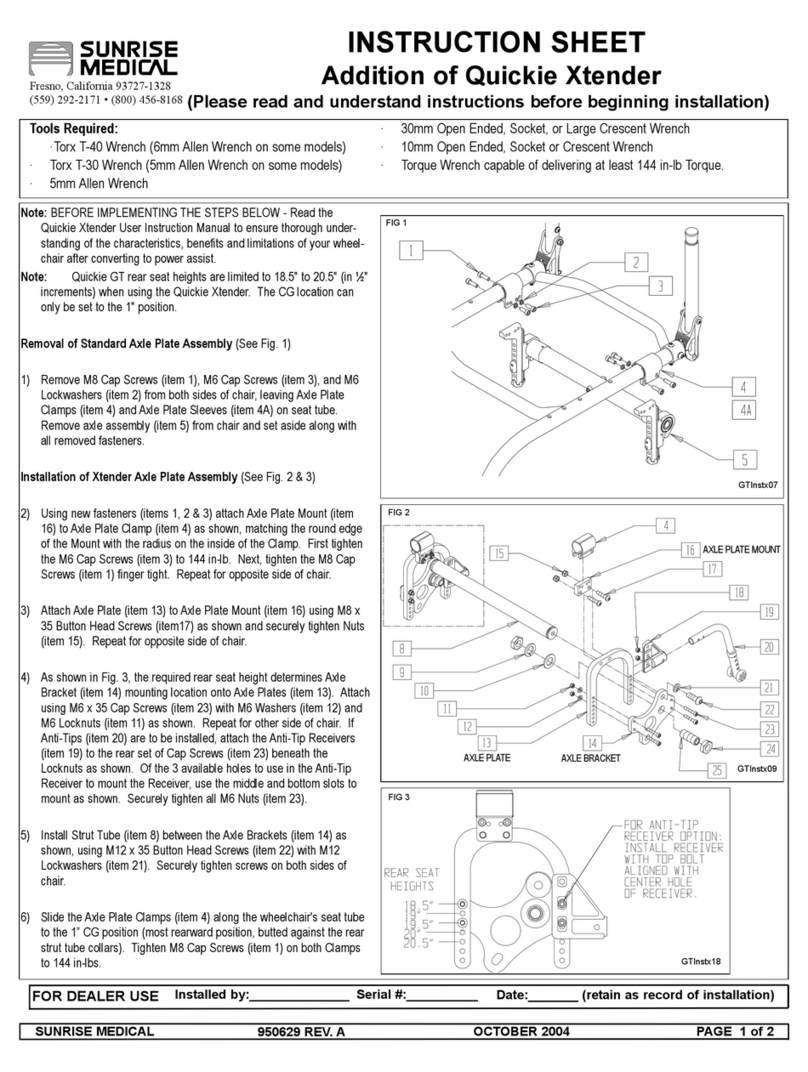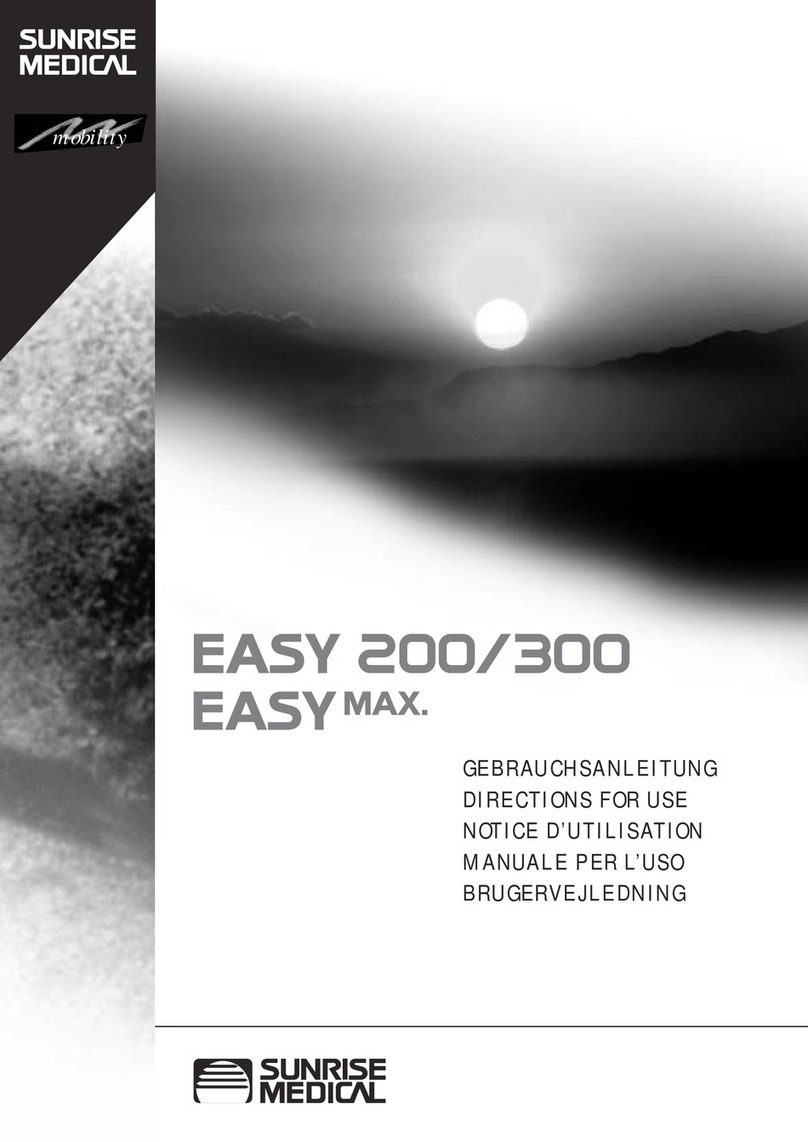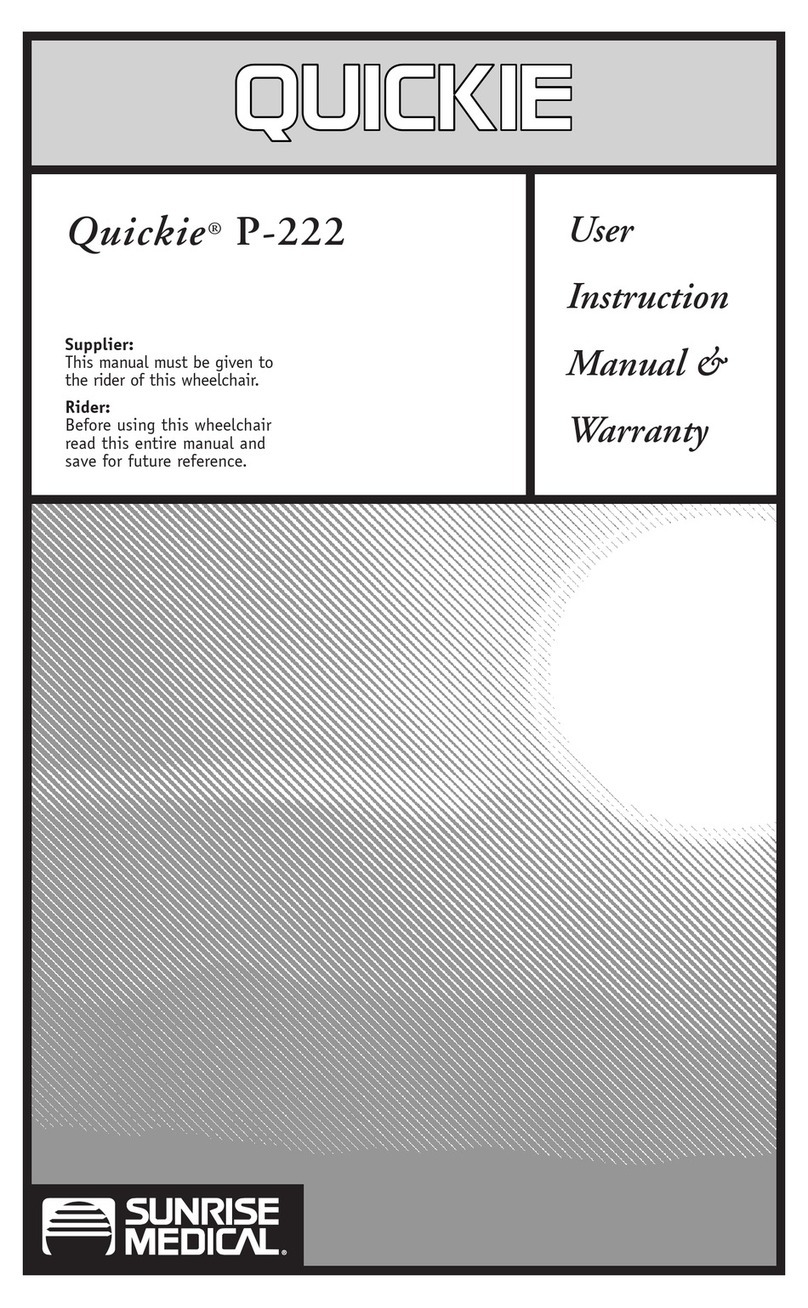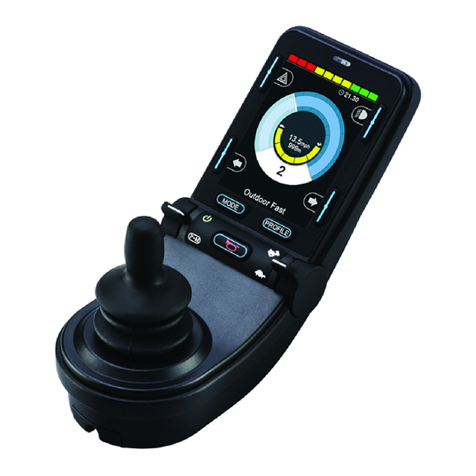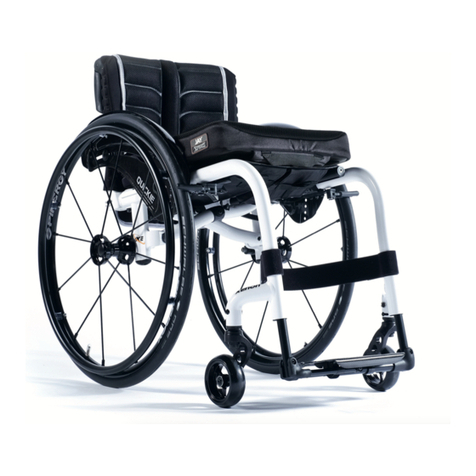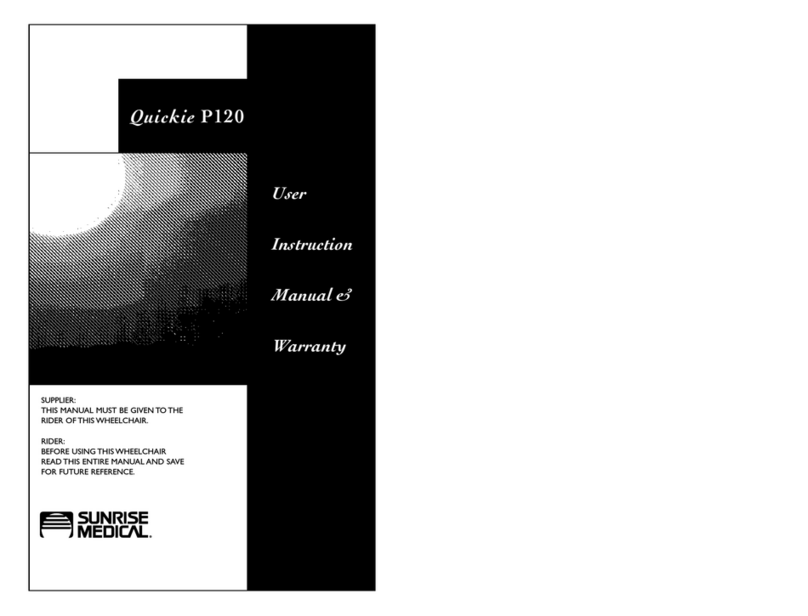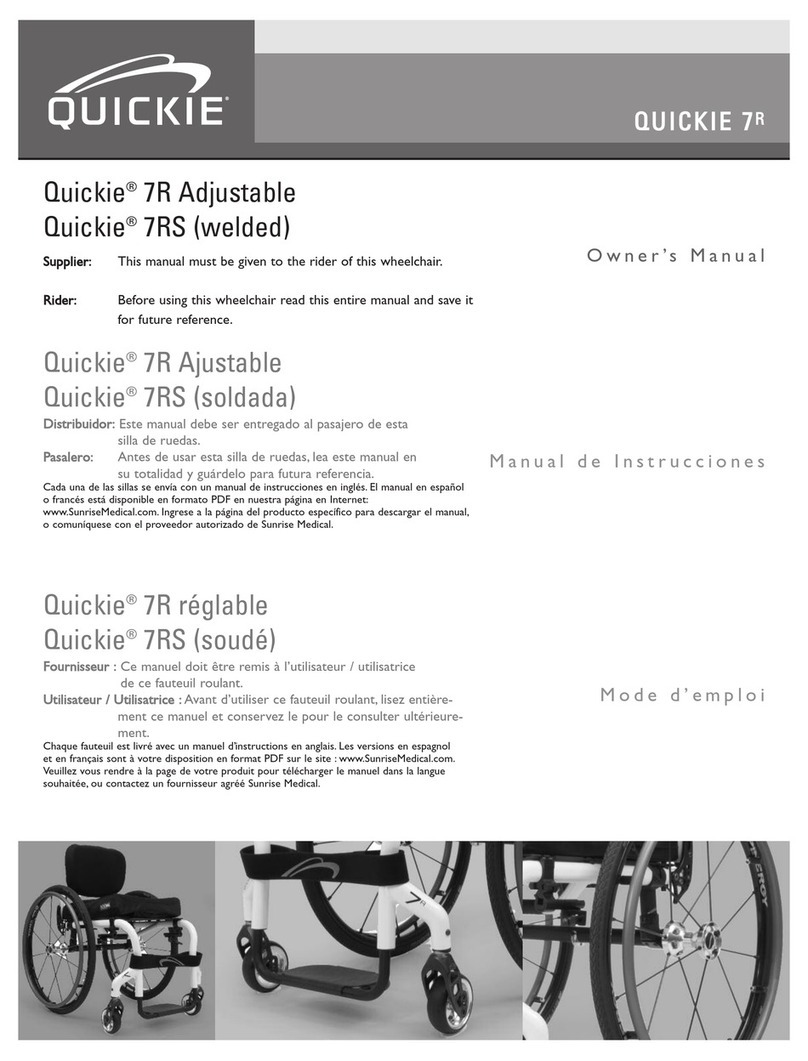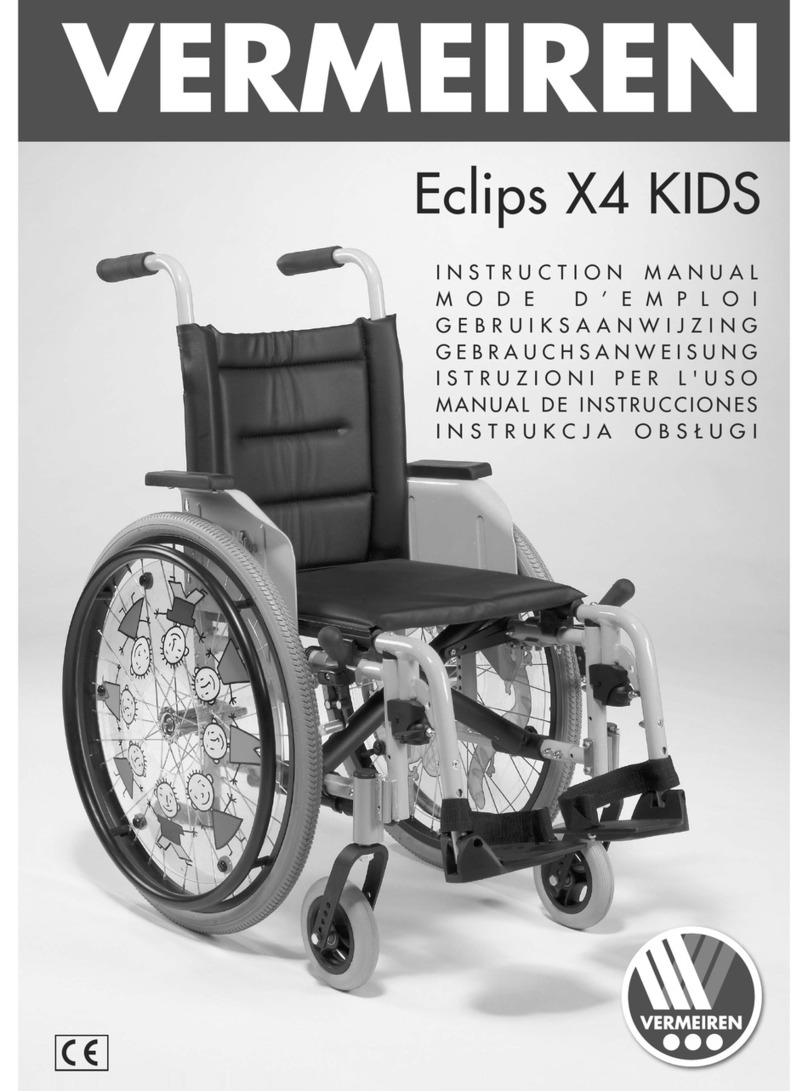SUNRISE F16 Issue 8 2
Guarantee
Please remember to fill in and post the guarantee registration card enclosed with this manual. Sunrise
Medical Limited recommendthatyoudonotundertakemaintenancetasksotherthanthoseexplainedinthis
manual. Your local approved Sunrise Medical service agent is fully trained by Sunrise Medical to carry out
detailed maintenance as and when required. Use only genuine Sunrise Medical replacement parts.
7. The above warranty conditions apply to all
wheelchair parts, for models purchased at full retail
price.
8. Under normal circumstances, no responsibility will
be accepted where the wheelchair has required
repair or replacement as a direct result of:-
a The wheelchair or part not having been
maintained in accordance with the
manufacturer’s recommendations, where such
exist. Or failing to use only the specified original
equipment parts.
b The wheelchair or part having been damaged by
neglect, accident or improper use.
c The wheelchair or part having been altered from
the manufacturer’s specifications, or repairs
having been attempted prior to the service agent
being notified.
Please keep a note of your local service agent’s
address and telephone number in the space below. In
the event of a breakdown, contact them and try to give
all relevant details so they can help you quickly.
The wheelchairs shown and described in this manual
may not be exactly the same in every detail as your
own model. However, all instructions are still entirely
relevant, irrespective of detail differences.
The manufacturer reserves the right to alter without
notice any weights, measurements, or other technical
data shown in this manual. All figures, measurements,
and capacities shown in this manual are approximate,
and do not constitute specifications.
Your local dealer
Your local dealer
Your guarantee
The guarantee form is included in the Sunrise Pack,
please fill in the relevant details and return to us to
register your entitlement.
THIS IN NO WAY AFFECTS YOUR STATUTORY
RIGHTS.
Warranty conditions
1. The repair or replacement will be carried out by an
authorised Sunrise Medical dealer/service agent.
2. To apply the warranty conditions, should your
wheelchair require attention under these
arrangements, notify the designated Sunrise
Medical service agent immediately giving full
information about the nature of the difficulty.
Should you be operating the wheelchair away from
the locality of the designated Sunrise Medical
service agent work under the “Warranty Conditions”
will be carried out by any other service agent
designated by the manufacturer.
3. Should any part of the wheelchair require repair or
replacement, as a result of a specific manufacturing
or material defect, within twelve months from the
date on which the possession of the wheelchair
was transferred to the original purchaser, and
subject to it remaining within that ownership, the
part or parts will be repaired or replaced completely
free of charge if returned to the authorised service
agent.
Note: This guarantee is not transferable.
4. Any repaired or replaced part will benefit from these
arrangements for the balance of the warranty
period applicable to the wheelchair.
5. Parts replaced after the original warranty has
expired are covered for a further twelve months.
6. Items of a consumable nature will not generally be
covered during the normal warranty period, unless
such items have clearly suffered undue wear as a
direct result of an original manufacturing defect.
These items include amongst others upholstery,
tyres, inner tubes, and similar parts.
Sunrise Medical Limited
High Street Wollaston West Midlands DY8 4PS
England
Tel 01384 4466 88 Fax 01384 44 66 99
www.sunrisemedical.co.uk
